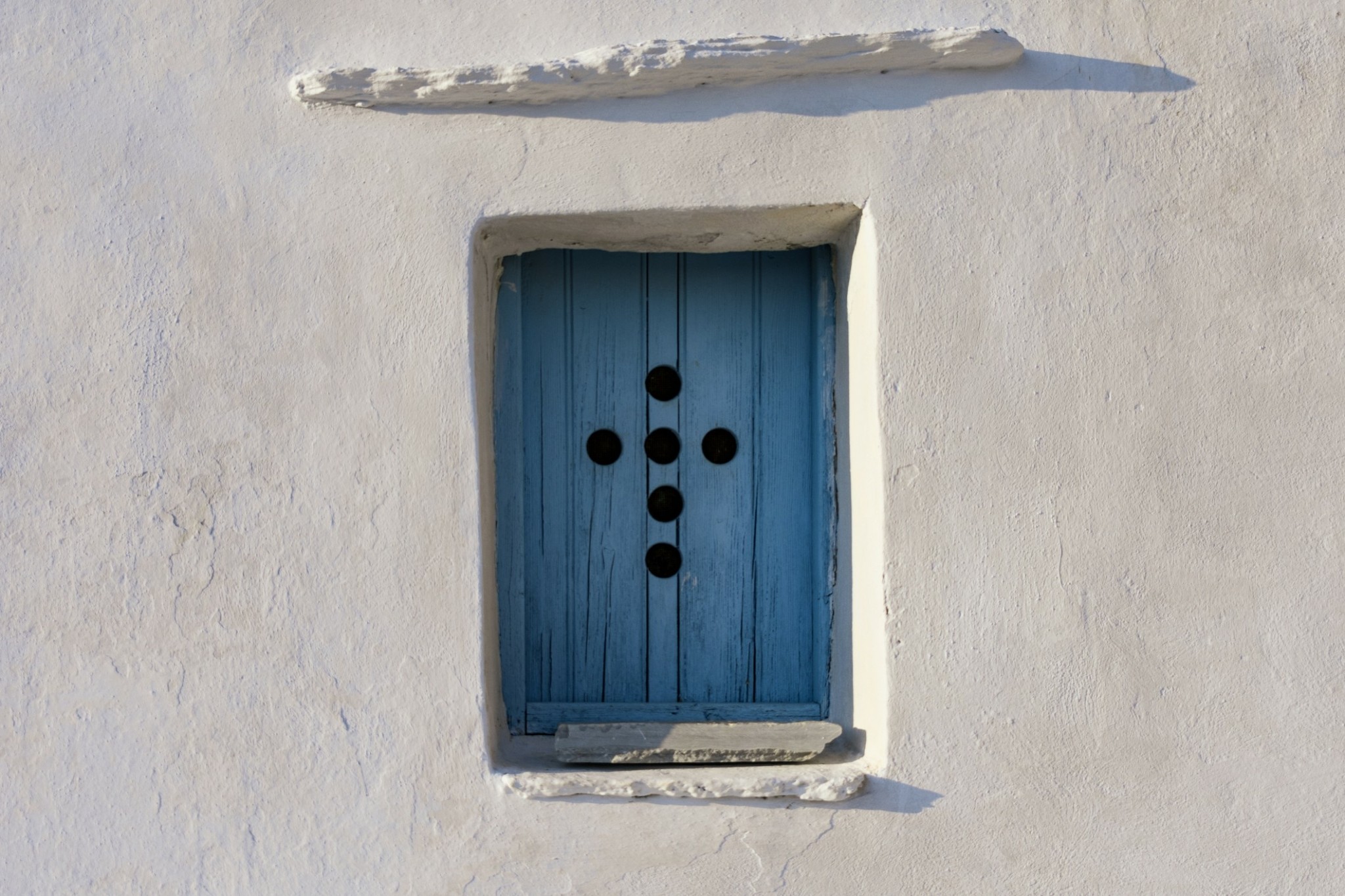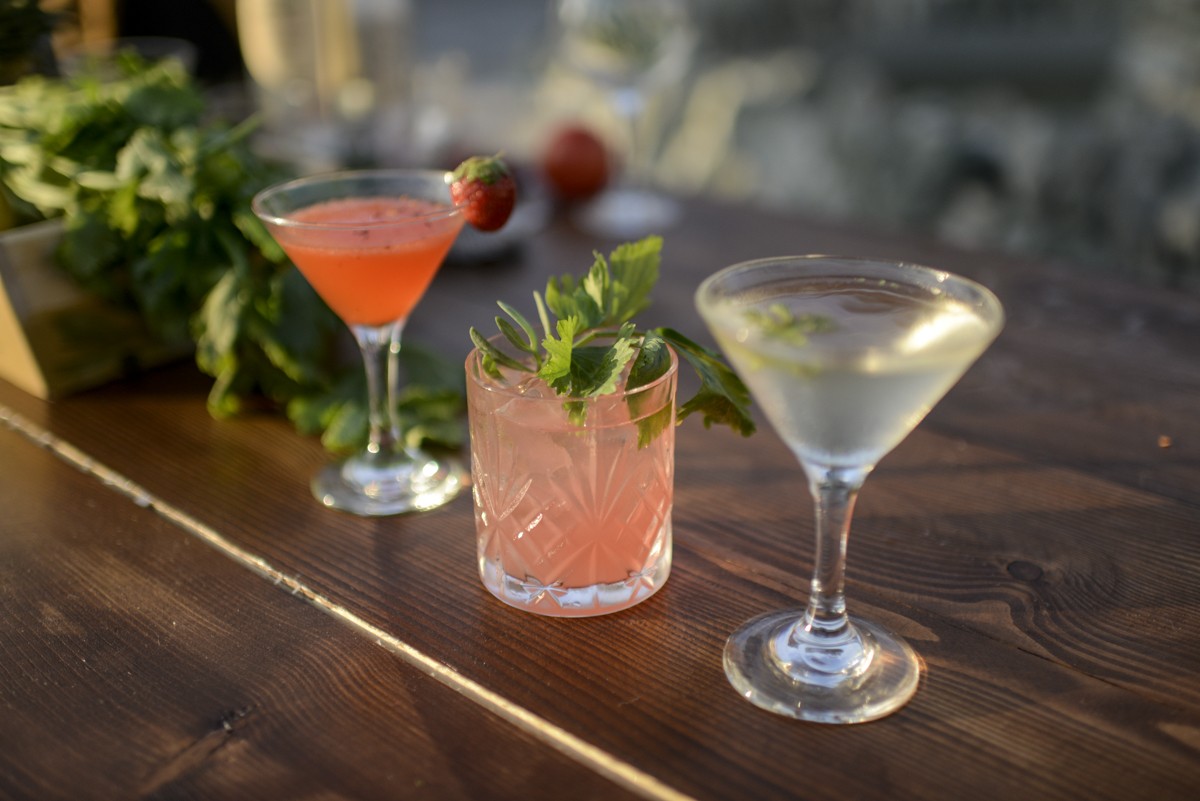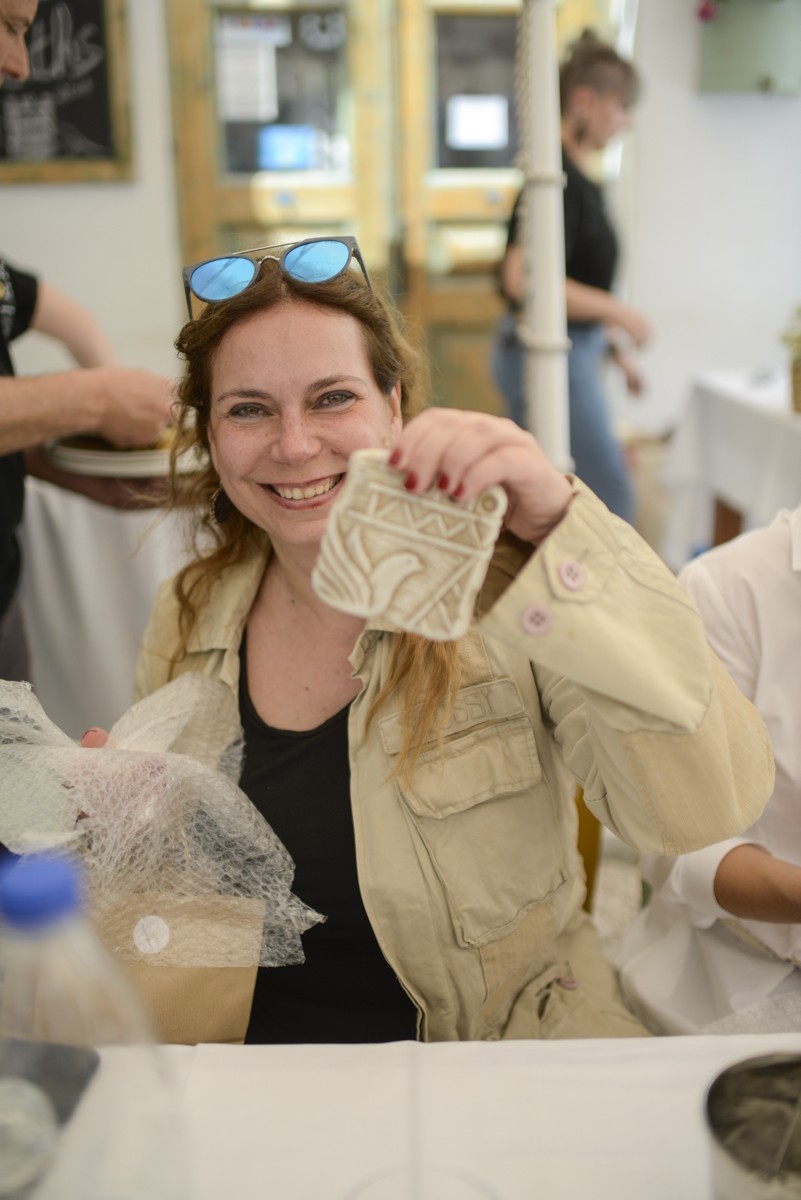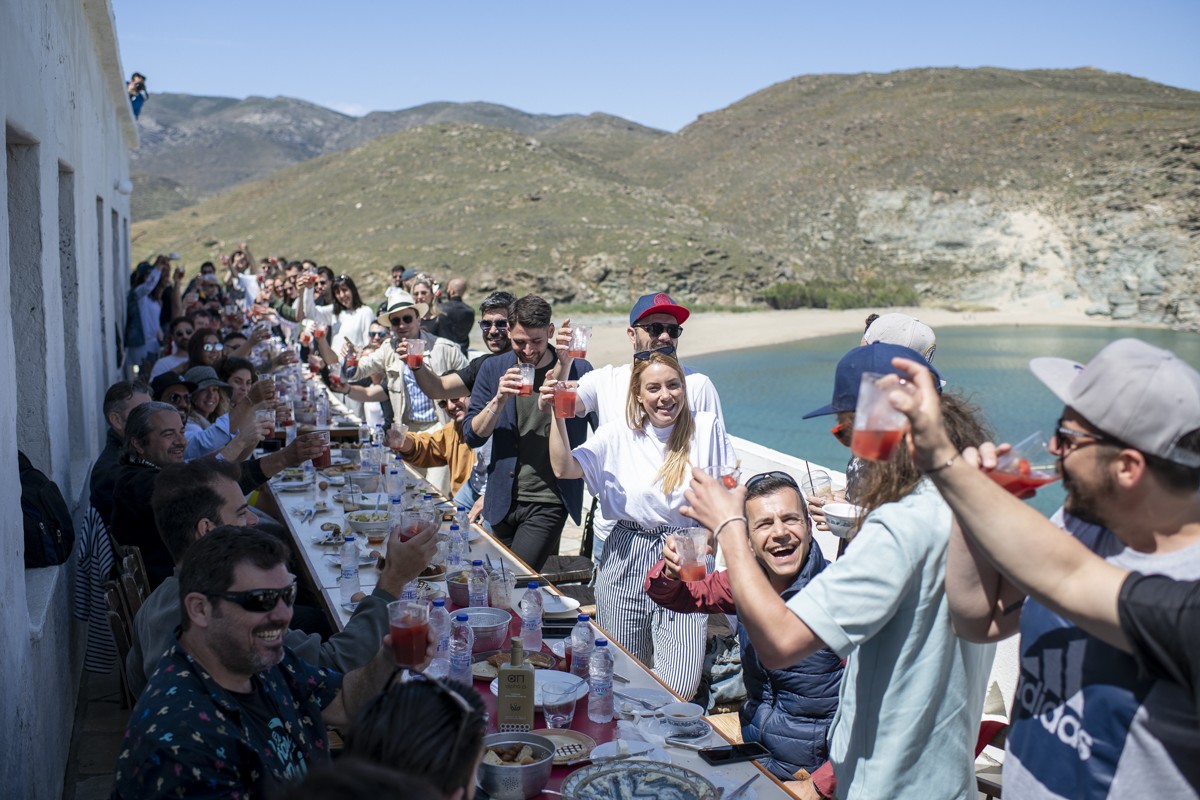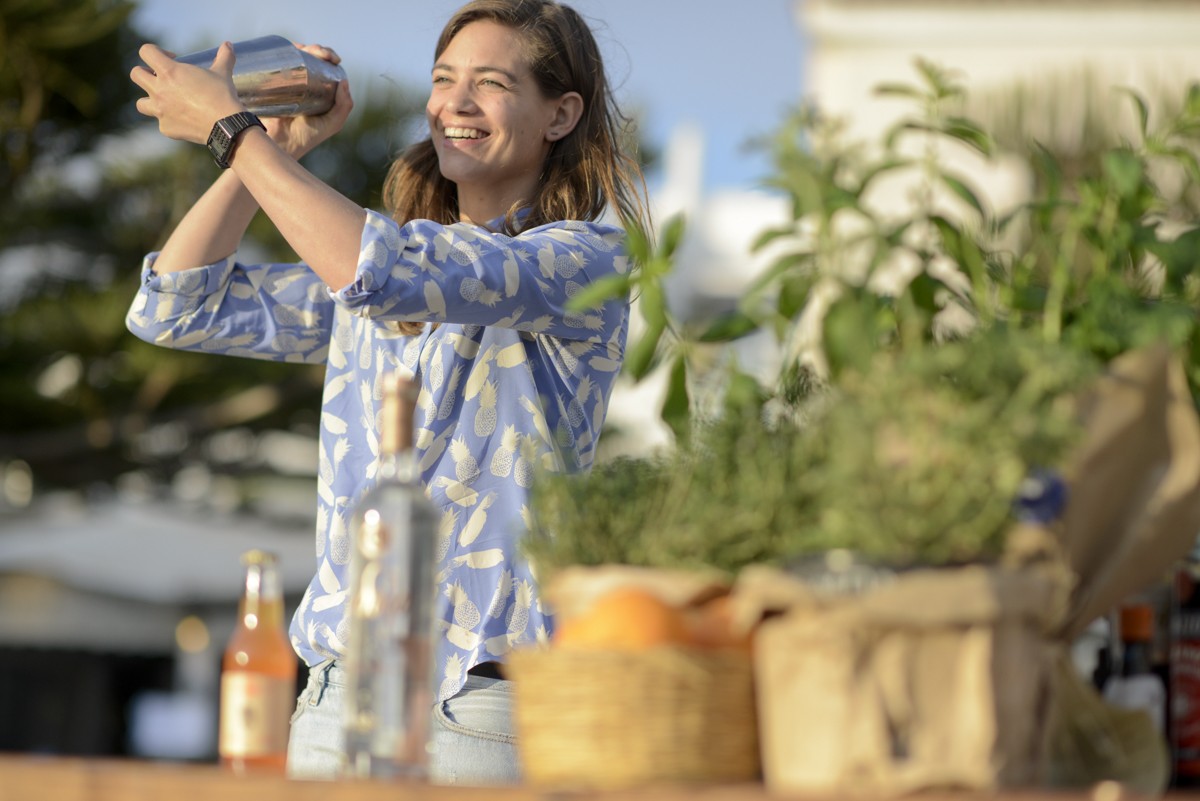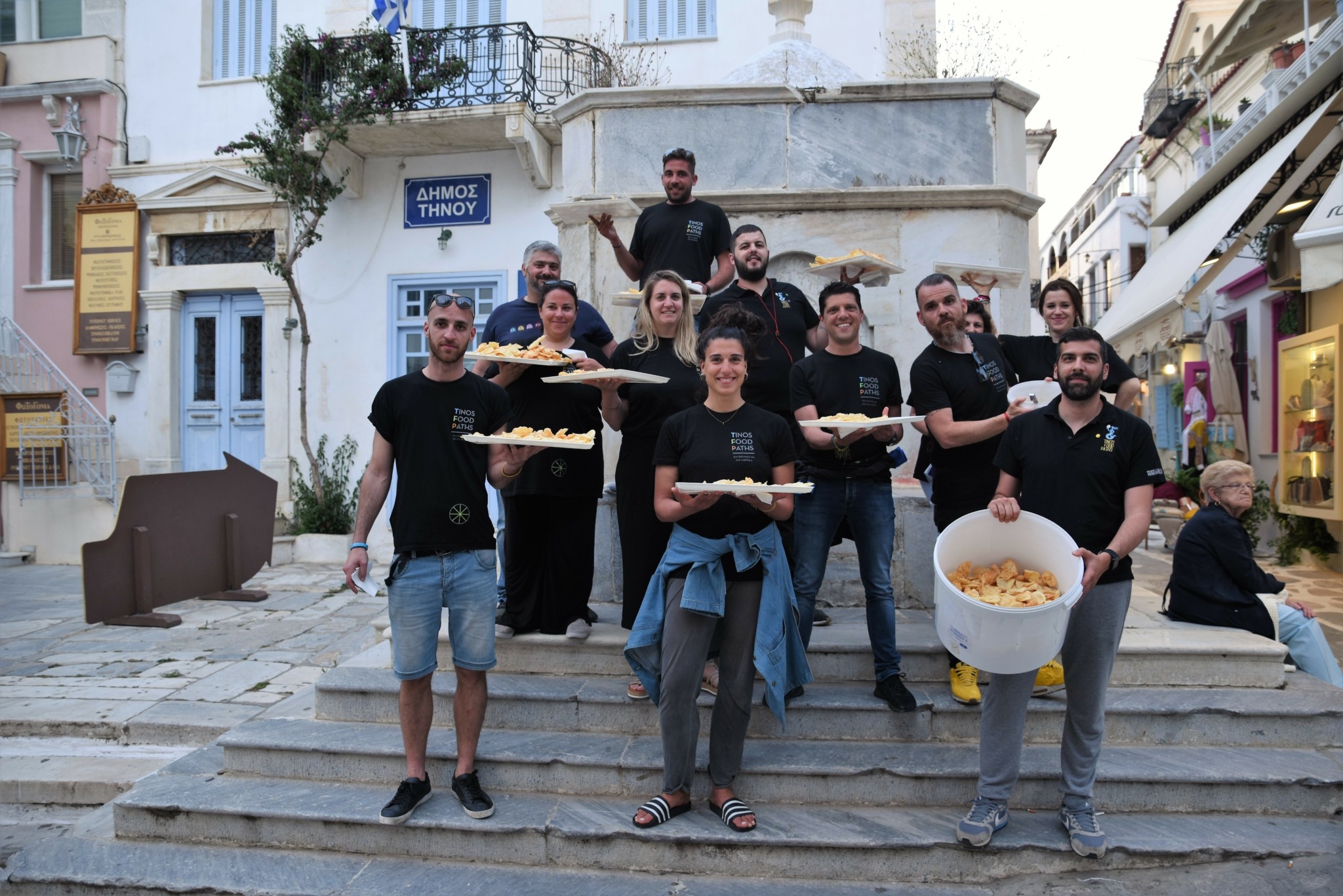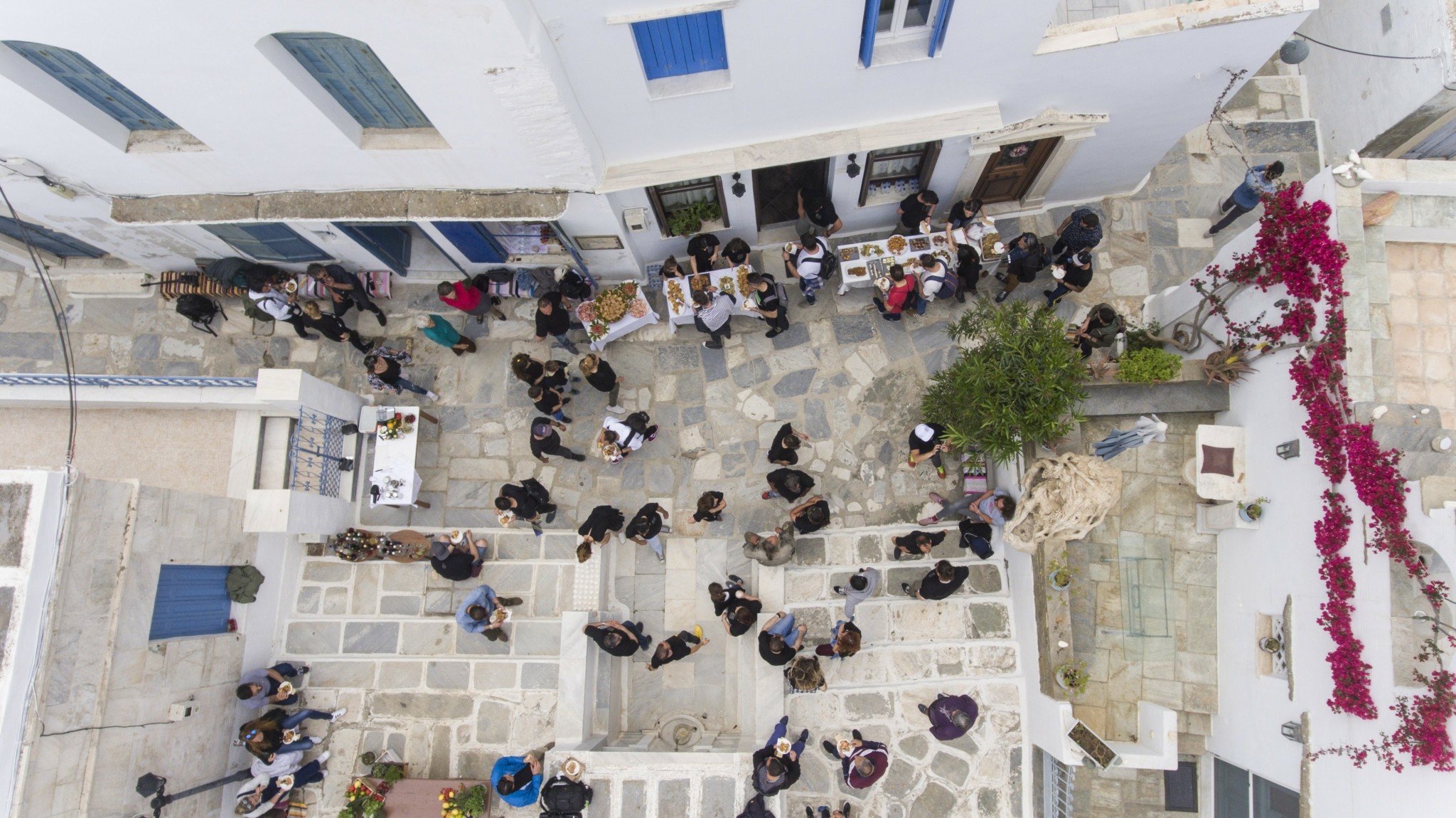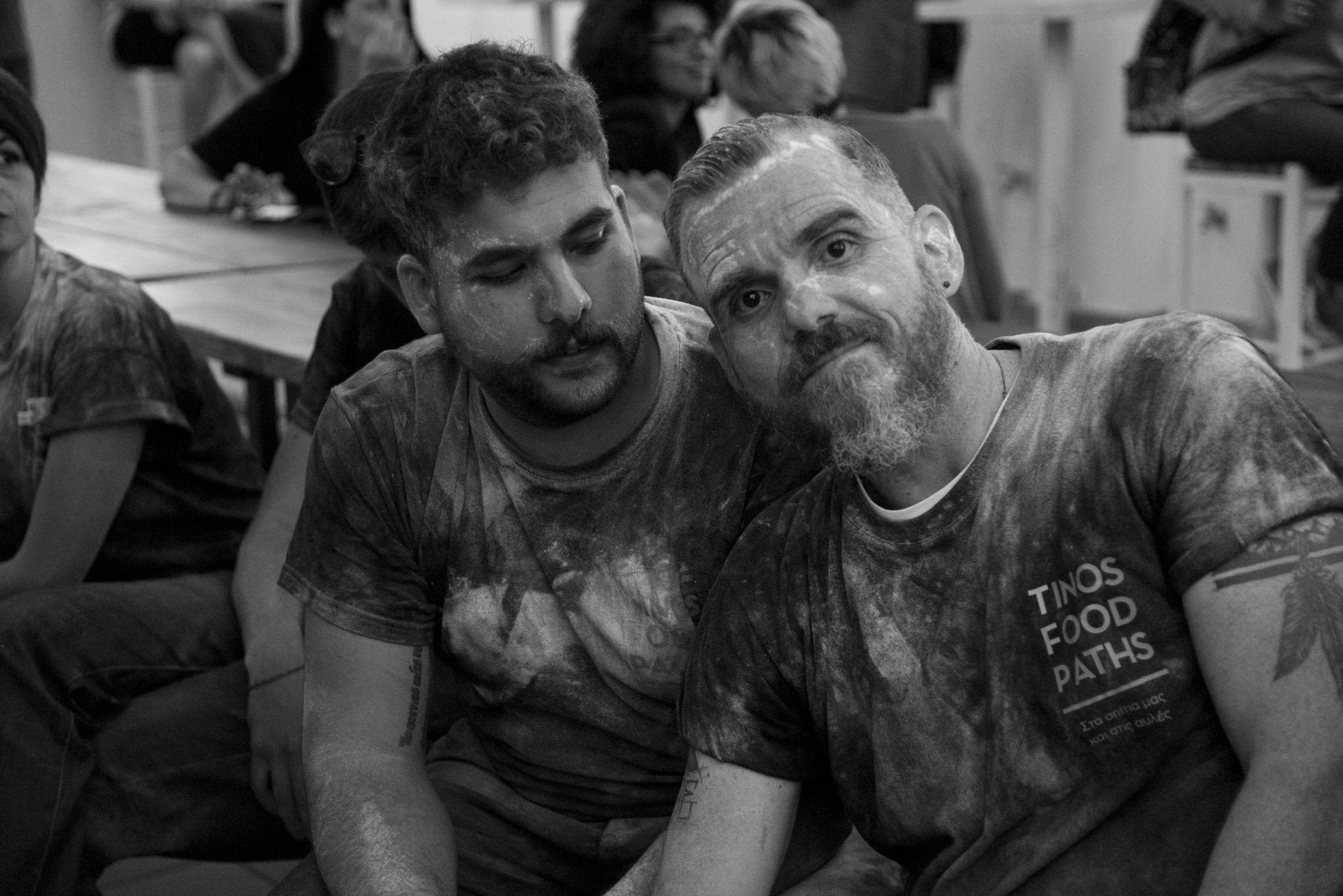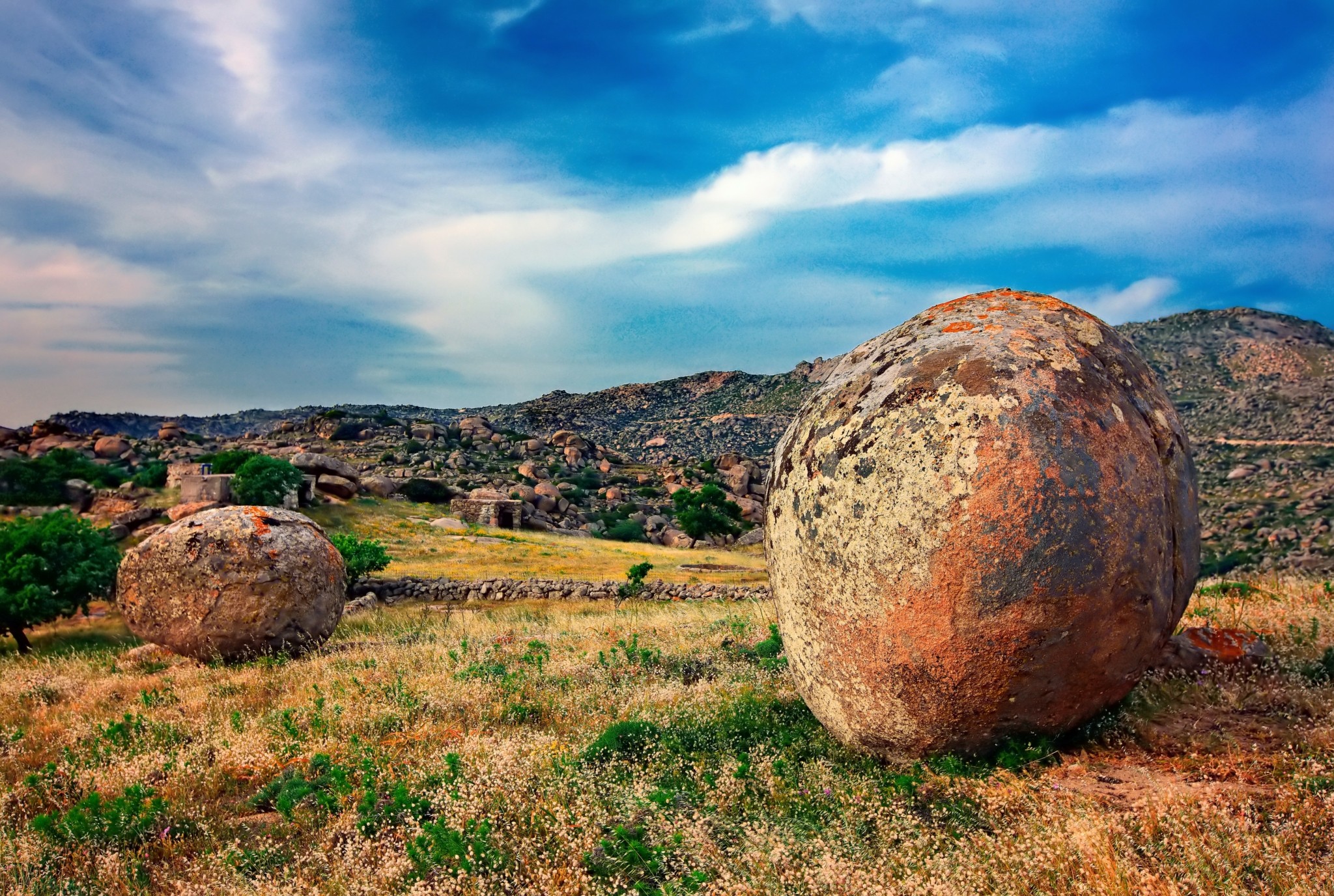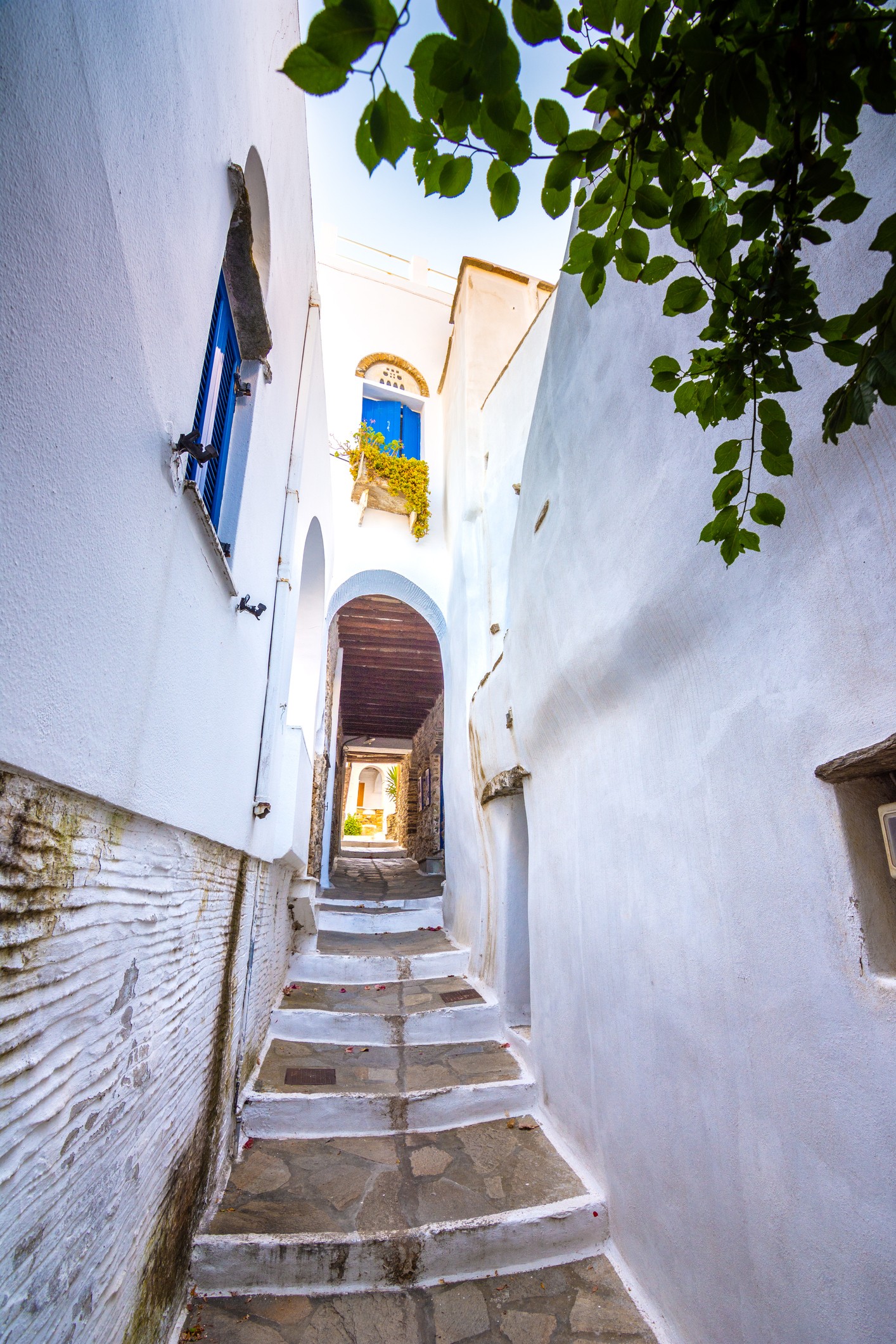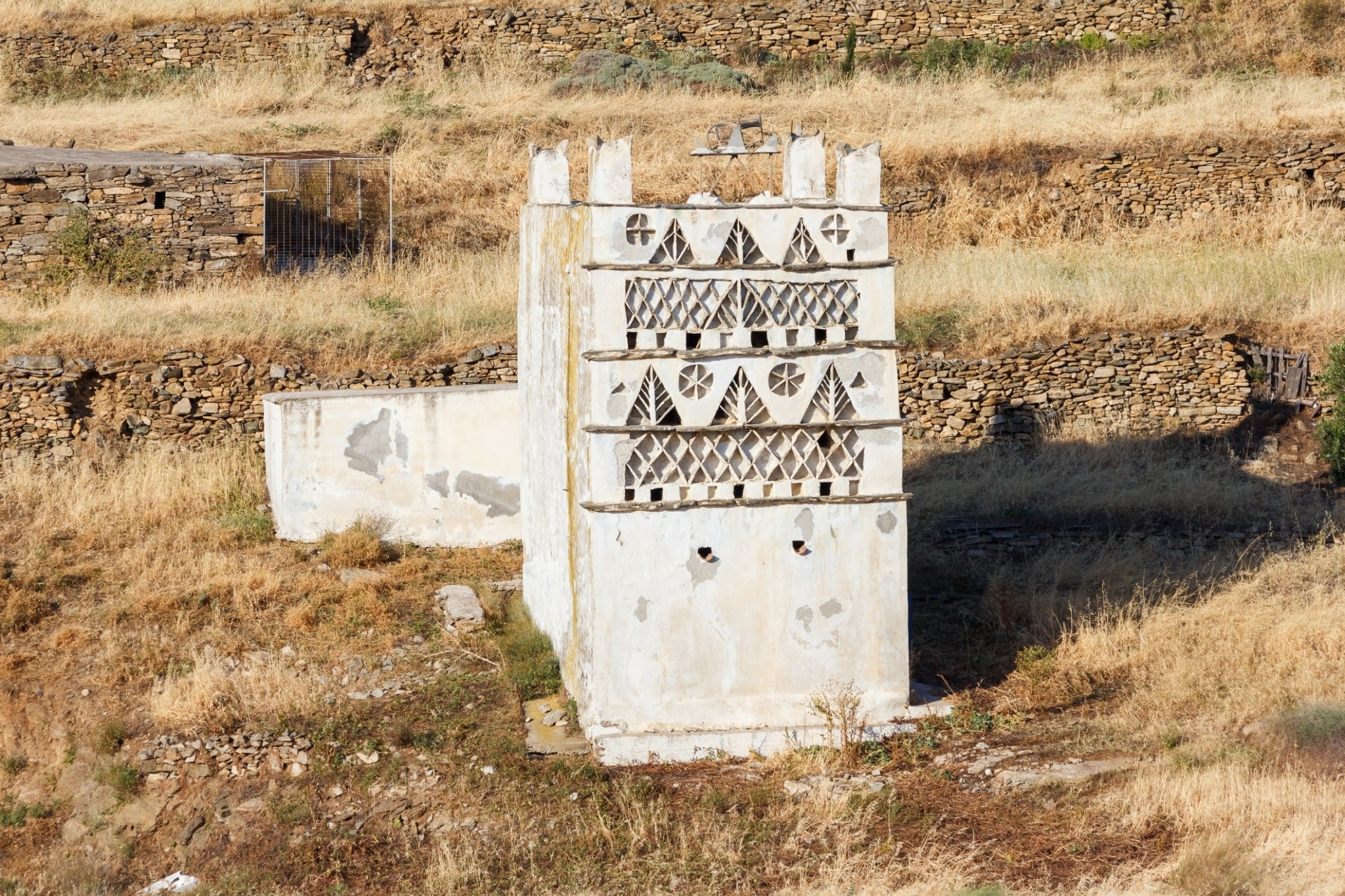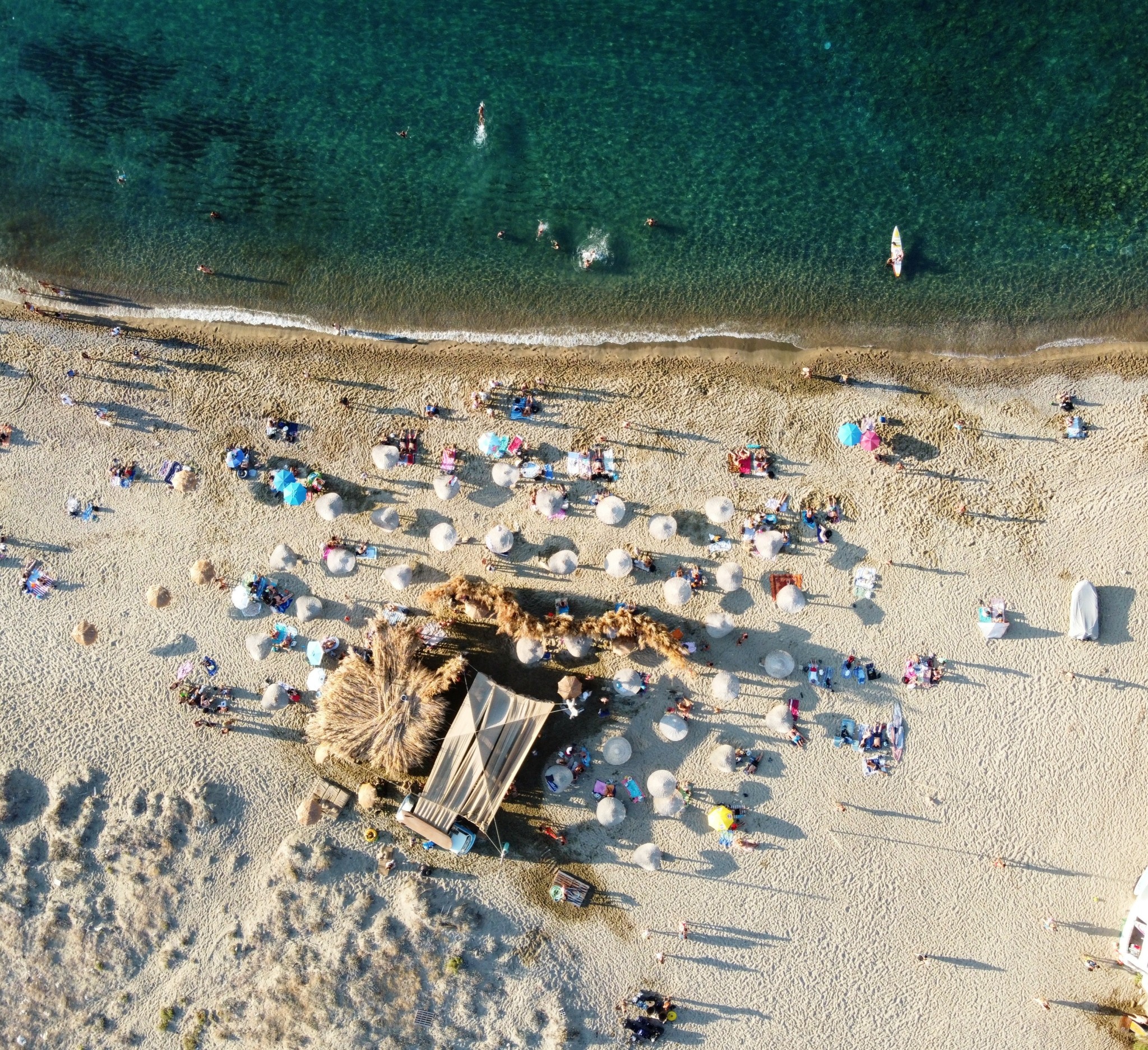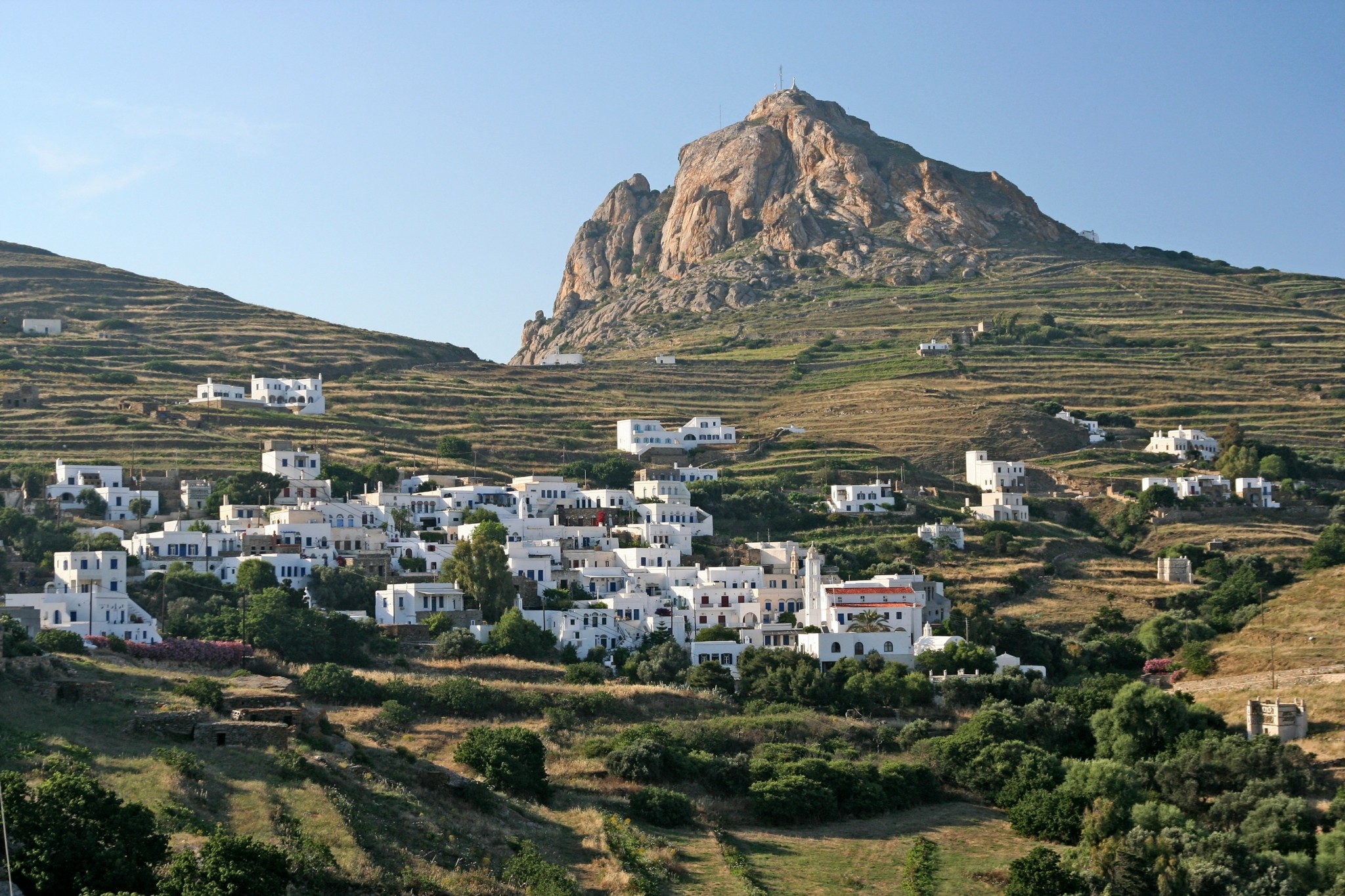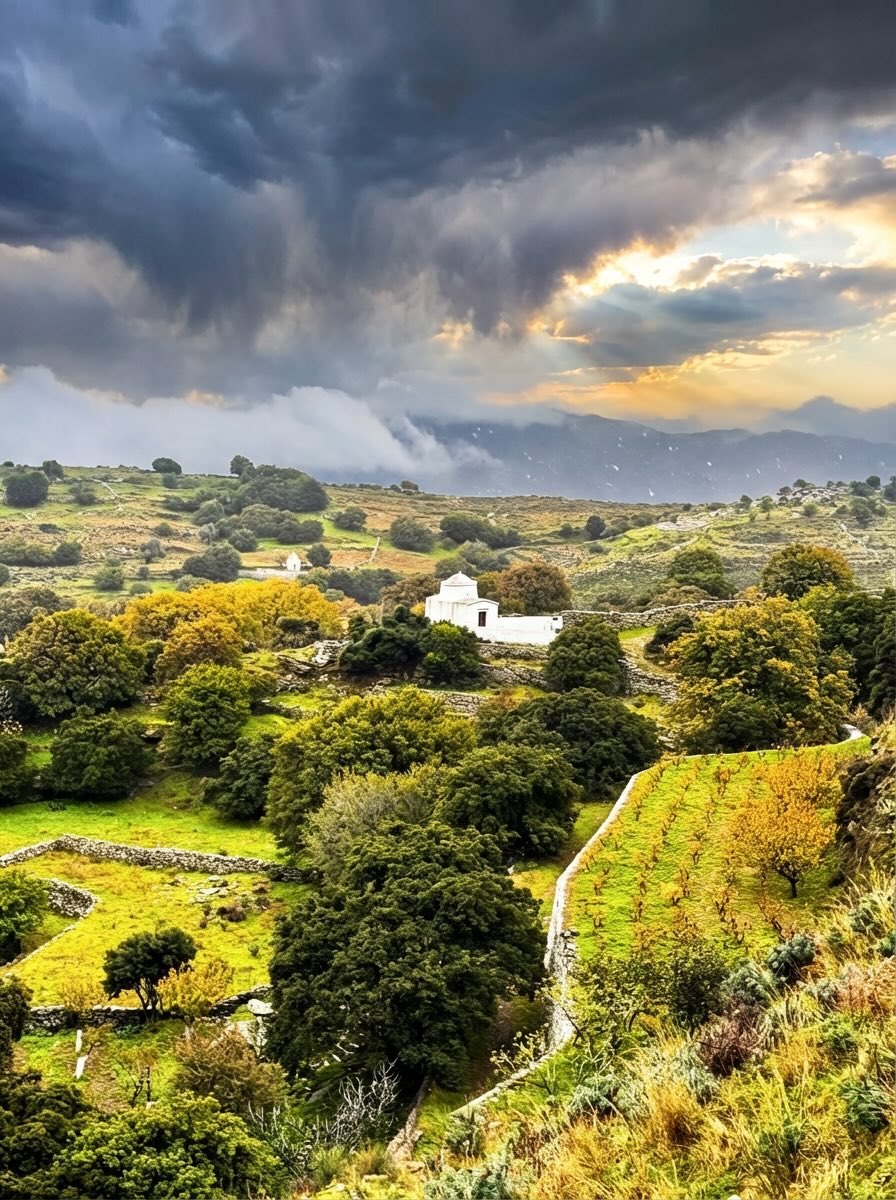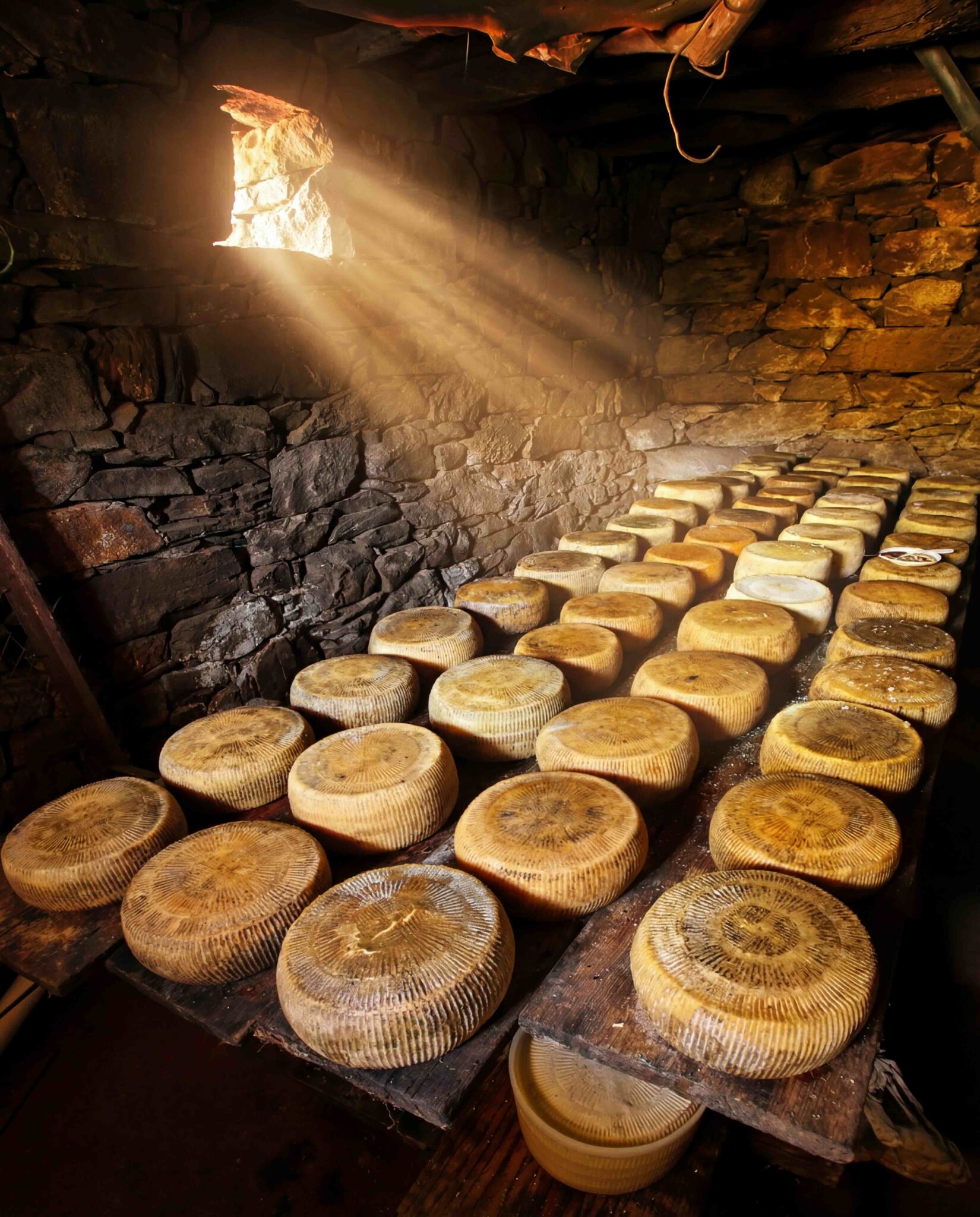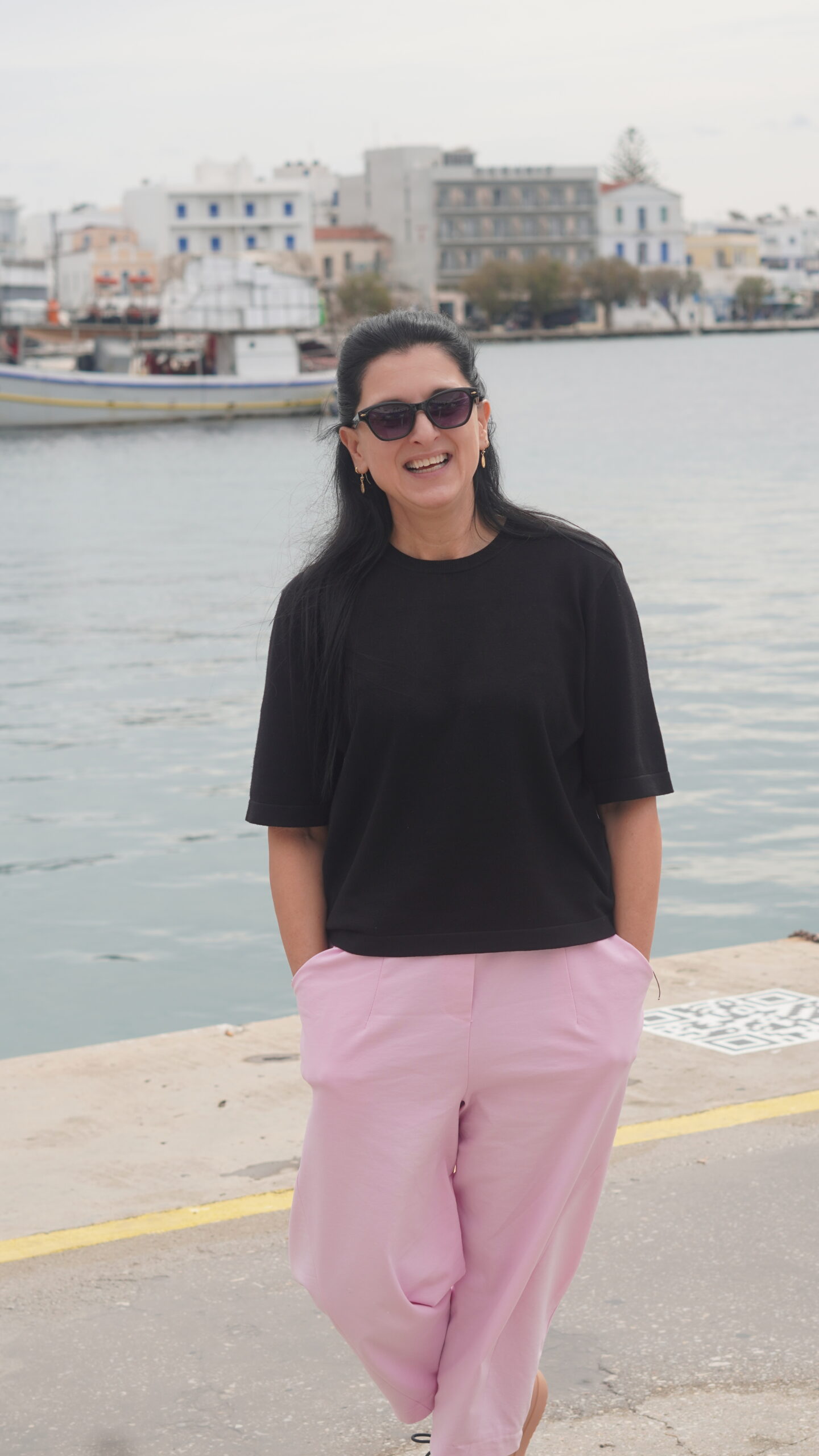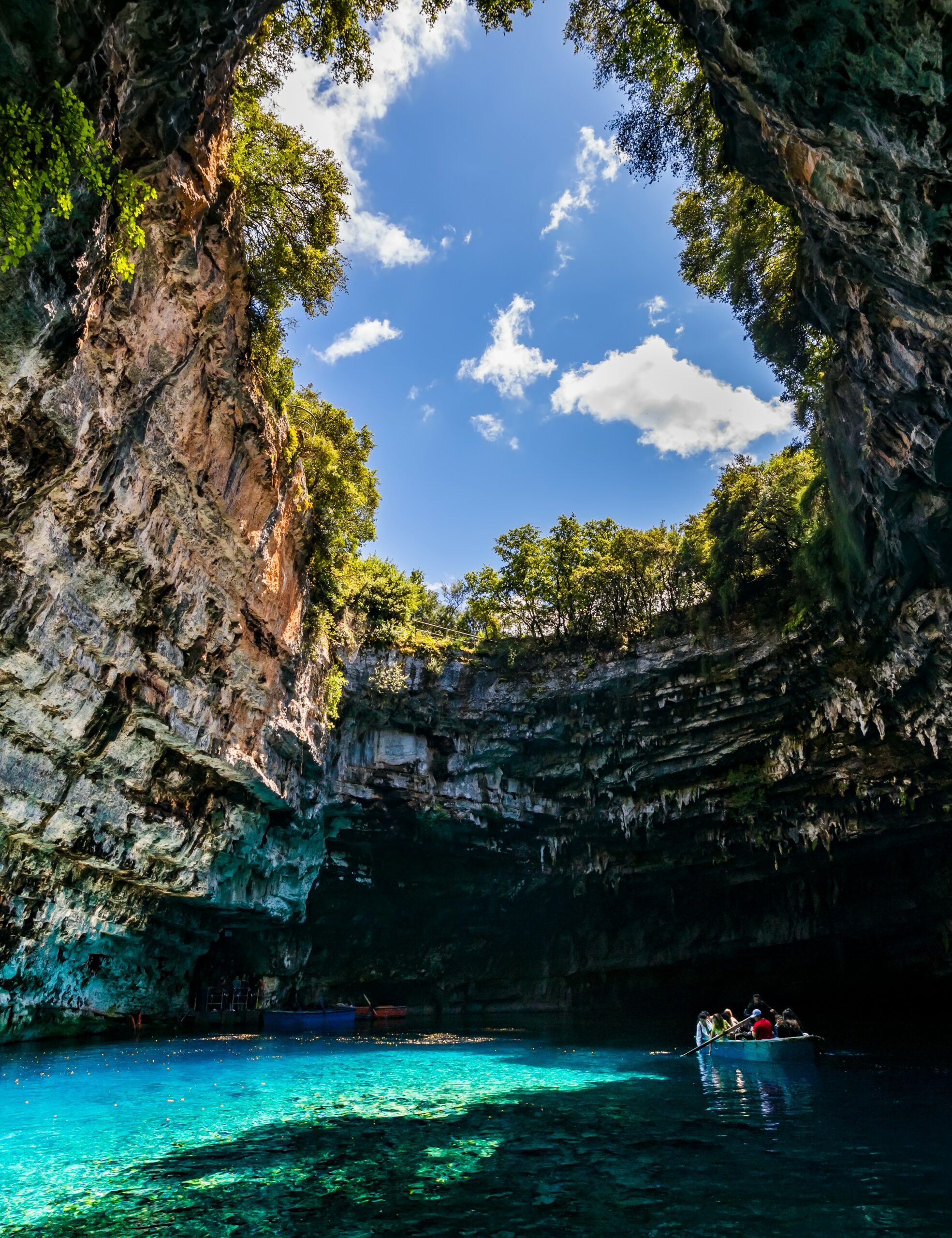The island preceded mankind. Its connection with human existence forged the location’s history. Tinos existed before the Virgin Mary, before the arts and primary production. It was there, in the northern section of the Cyclades, southeast of Andros and northwest of Mykonos, surrounding, protectively, Exomvourgo, the steep mountain rock on the island, standing nobly, 641 metres high.
“Locals tamed the land and elements of nature. The craftsmen of Tinos, using the same kind of stone, built houses that were cool in summer and warm in winter, moved closer to the neighbour, adjoining houses for protection against the mad winds and scorching sun. Tinos is not a place for lazy fun-seekers. This place breeds people who don’t seek pleasure. The place is made for people who are not afraid of the struggle, the joy of reconciliation. It is made for people for whom the angry, bad-tempered northern wind is always amorous, laden with longing and sorrow, pleas of innocence, nostalgic sighs, filled with ‘messages, promise, praise and colours of dreams and hope,’” writes Giorgos Dimopoulos, a theologian and writer on the island, fusing human thought with life conditions.
Dimopoulos was not born on Tinos, but found himself there through a twist of fate, adoring it like his homeland, mountainous Gortynia, in the central Peloponnese. This was long before Tinos was discovered by modern-day tourists with redefined, less transcendental requirements for their summer holidays, and the search, from scratch, for a new form of excitement directly linked with tradition and a return to the roots, however this may be defined, as the concept differs for millennials and baby boomers.
“I have been noticing the changes on the island over the past four years,” commented Deni Kallivoka, a food wine & spirits journalist, referring to Tinos’ skyrocketing popularity as a destination. “I have a photo of myself swimming alone, with my son and husband, on August 15 [summer peak] at Rohari, which, right now, is one of the most popular beaches on the island. For many years, Tinos drew sophisticated travellers as a result of the Tsoclis museum and the politicians and journalists who fell in love with the island and ended up buying houses on it, while, at the same time, luring hordes of people who visited Tinos for the [Miraculous Icon of] Virgin Mary pilgrimage. The former were not considered tourists. They had become locals. The latter belonged to a specific type of tourism category, usually low budget. Following 2015, through various initiatives, the island began being promoted for its culture, gastronomy and hinterland beauty, not as a religious-tourism destination. Over the past five years, the profile of people coming to the island has changed drastically, the age group has fallen significantly, to 20-35, also embracing mainstream tourism,” continued Kallivoka.
She organised an Aegean Cocktails & Spirits event on Tinos, attracting journalists and bartenders, based on her “crazy” idea to adopt spirits normally served at traditional cafes for cosmopolitan bar cocktails. The idea brought together the sweetness of retro stagnancy with the dynamic Instagram hashtag spread of information. And, suddenly, Tinos was a top trend on social media.
“And, just imagine, all this occurred during the capital-controls period, when the word ‘Greece’ was still a bad word,” Kallivoka pointed noted.
Egos swept aside
Around this time, in May, 2015, Tinos Food Paths emerged on the island as an initiative taken by restauranteurs to extend the season. Antonis Psaltis, one of the individuals behind the concept – which, for its success, counted on communication and the island’s profoundly delicious food products, ingredients and recipes – described it as a “synastry, a magical moment.”
Explaining how the initial spark developed into something bigger, Psaltis noted: “The initial idea emerged from our need to become acquainted with the gastronomy of our land and, continuing further, the collective management of our gastronomic culture and its extroversion. The group initiative represents the dining and recreation establishments on the island. The initial team of seven became the group’s board members,” he added.
“At the onset, we became acquainted with the gastronomy of the island and attempted to establish a foundation for the development of a gastronomic destination. As the years went by, the endeavour was widely embraced throughout the island. People from all production sectors on Tinos, as well various parts of Greece, contributed to this initiative, which remains alive and kicking…throughout the year. Over time, we got to know each other, put our egos aside and worked collectively. We encountered difficulties, which brought us even closer. Every one of us does his or her best, feels proud about the place, and offers hospitality and knowledge to visitors and guests,” continued Psaltis, offering life lessons in a few lines.
Food journalists had every reason to hail the island and its culinary delights. In 2013, Maya Tsocli, best known as a travel journalist, got the ball rolling by inviting a group of food and beverage specialists to try the Nisos beer, which she co-produces with Alexandros Kouris on Tinos, her homeland. The beer brand has gained immense popularity in Greece and abroad, enjoying considerable export activity.
“We combined the island’s gastronomy with our culture, folklore and everyday life. We organised experience-based activities throughout the island; dinners and meals at the most amazing locations. We presented our island and endeavour both in Greece and abroad. We cooked for common-benefit purposes, supported and continue to support the island’s social cuisine. The volunteers, numbering just seven in the beginning, have, over the years, reached over 250,” Psaltis remarked, elaborating on the development of Tinos Food Paths and the island’s establishment as a gastronomic paradise. “Tinos has become a destination for food and wine lovers. Besides the obvious [sun-and-sea] reasons, travellers come to the island to visit villages and gorgeous settlements, vineyard areas, trekking trails and the rest. Naturally, all this activity is taking place without having eclipsed the island’s religious tourism, which we cannot neglect as it also constitutes a piece of Tinos’ cultural puzzle. The hinterland, which, throughout the years, has maintained its authenticity, is nowadays the main attraction for visitors, while the main town, too, is registering many visits as scores of new shops are opening, both along the seaside road and within the picturesque alleys,” he continued.
During ancient times, the island was known as Hydrousa and Ophioussa, respectively suggesting, from translations of the ancient Greek names, Tinos’ abundant amounts of water and numerous snakes, which, according to mythology, Poseidon, the god of the sea, chased away from the island, surviving attacks. In addition, in his writings, the ancient playwright Aristophanes mentions that the island was called Skorodoforos, for its production of top-quality garlic. Some historians claim the island’s name is derived from the Phoenician word tenok. meaning snake, while others believe it hails from the name of the island’s very first inhabitant. Tinos was the leader of a group of Ionians from Caria in Asia Minor who reached the island around 1130 BC after they were chased away by the Dorians.
“Signs of the love and care shown for nature by our predecessors, recent and distant past, are scattered throughout Tinos’ hinterland – very evidently, as a matter of fact. So many millennia of life and we feel at home, without anachronisms. Without being conscious of it, we feel a strong attraction, a great joy, visually and aesthetically, no matter how many times we pass by an area,” Dimopoulos, the theologian and writer, notes in his writings, identifying the attraction felt by visitors.
Describing, in a profound way, her bond with the island, Marianna Kritikou, the new artistic director at the Tinos Festival, noted: “I owe my existence to my parents and my wellbeing to Tinos. What contributed to this? The faith of others; hospitality; kindness. Also, the handmade element, the human toil…for the creation of terraces [as hillside land-containment barriers] from the island’s top to bottom; the dovecotes. The beauty, the art of everyday life and simplicity. The fig platter, oven tray with stuffed tomatoes. Tinos is the way the rocks descend and leap into the sea, the wind blowing through the alleys, the arrival of yachts in May,the scents and Easter-time households. The islands opposite Tinos. The question “whose are you?” when in town for work. Tinos is the home. And there is nothing better than home, especially if it is in the Cyclades.”
Tinos’ entrepreneurs took action, themselves, rather than just hope for change
“The ‘Muse of the Aegean’, as goes the main message of our campaign, lures the public with its trueness. Its authenticity. The island relies on its unique beauty without trying to become something different from what it is, or to resemble other destinations. We believe this is a significant part of what we promise visitors. It is this truth that visitors come to discover. Religious tourism will never cease to exist for the island, because our Virgin Mary is there, protects us, inviting us to make the pilgrimage. However, beyond this, there is a wealth of other things that we would like visitors to experience. For this reason, we based our efforts on the creation of multimedia, with modern content, which we distribute through social media networks as well as other means. Thematic videos, photos and travel stories generate interest for wanting to discover Tinos. During the recent pandemic-related quarantine period, we developed apps both for the island’s network of trekking trails (www.tinostrails.gr), sign-posted and organised, as well as a digital guide assisting with the discovery of significant points and information concerning the island,” remarked Tinos mayor Giannis Siotos, while Kritikou, the Tinos Festival head, added: “Tinos was always a top destination. A destination is always there, at the same location, awaiting to be discovered by visitors. Somehow, this is an ongoing invitation until the visitor heeds the call. For example, as [early visitors] Jacques from France did in the 80s and Sigrid from Germany did shortly afterwards. Tinos did not reach the minds of travellers. Travellers began to consciously discover Tinos. For many years, Tinos was a religious-tourism destination – at least that’s what the travel guides and sites all wrote. But there were also those individuals who knew about the local sacred magic.
What was it that launched Tinos’ ascent to new levels of tourism? The early, and stylish, travellers who paved the way? The word-of-mouth effect of early visitors such as Jacques and Sigrid, as suggested by Kritikou? The influence of food journalists and bartenders? The non-stop flow of Instagram hashtags? The much-photographed velvet sofa over Kolibithra beach? Neighbouring Mykonos, whose change of profile forced die-hard bohemians to flee? The magical synastry, as was noted by Psaltis of Tinos Food Paths? All these factors combined?
Ioanna Dretta, CEO of Marketing Greece, offered her own explanation. “Tinos, in recent years, has undergone a brand transformation, from one of religious-tourism destination character, exclusively, to one of significant summer destination for the Greek and international public, with good-quality services, natural beauty, gastronomy and local charm. Obviously, such a change is not a simple matter and requires the concurrent development of a series of prerequisites. First of all, a market need must exist. Local charm and authenticity are gradually becoming pivotal elements of destinations for Greeks, too. Holiday homes have been surfacing for years, creating a core demand. But the factor which, in my opinion, has made the difference is that the local community seems to have realised that it, itself, is the catalyst for prompting change. Tinos Food Paths, this important initiative taken by the island’s professionals, which, ultimately, has involved the entire local community for the promotion and shaping of the island’s holiday experience, is indicative of this. Contrary to what often happens, Tinos’ entrepreneurs took action themselves, rather than just hope for change to come.”
Dimitris Karaiskos, a graphic designer and publisher of Kyma, a black-and-white magazine, offered his interpretation of Tinos’ phenomenal rise. “On the one hand, the island’s inexhaustible, unexplored wealth and centuries-old culture, all over the island, waiting to be discovered by those willing to search, played a role. So, too, did the spread, through word of mouth, of something special going on at the island. After all, it is this special-quality aspect that is sought by travellers on an international map which, in the social networking era, has little to hide. Another factor that may have led to Tinos’ tourism success could well be the element of surprise. Travellers just love to discover the completely unexpected…believe this brilliance offered by unexpected discovery will not be lost, nor will the island’s character fade, because this quality appears to be inexhaustible all over the island; in places, people and stories.”
Tinos, an island of 52 villages and countless choices
“I arrived at Tinos on a Saturday night, September 7, 2013. With me was Pablo, a three month-old mixed-breed Geka [Greek hare hound]. A few months earlier, I had decided to experience winter on an island, setting myself two basic conditions. One was to have never before visited the location, the other was to not know anything about it or anybody there. Tinos, completely unknown to me, was such a place,” recalled graphic designer Giannis Tokalatsidis, who was born in Soufli, northeastern Greece, spent brief periods in Thessaloniki and Athens, and, over the past eight years, has lived in Isternia, Tinos.
“I can’t say that Tinos was what you could call chosen, because none of us were thinking about opening bars on an island,” said Chrysa Economopoulou, who nowadays co-runs the Koursaros bar on Tinos. “I had been many times, with my parents, alone, as well as with friends, and developed a hard-to-pinpoint affection for the island. Nikolas, now the co-owner of the bar, is from the island and, more or less, was raised inside Koursaros, a bar with a 30-year history. There was a good relationship with the person who ran the place over the years, so we thought that, no matter what, one of the Cyclades’ most classic rock bars, exceptionally positioned in the main town, had to carry on. It was more fate than choice, I’d say,” she continued.
Could it be fate, then, the miracle of destiny, that put Tinos in the limelight, inevitably with Delos, Greece’s most radiant place of all by its side?
“The answer to this concern ought to be a one-worded response, and this word is education,” noted painter Giannis Gizis, complementing on the subject concerning the preservation of the island’s identity. “But, because this requires time, the only way, along with a related legal framework, is to raise the awareness of locals as to what kind of a place they want to pass on to the next generation.”
“Given the fact that Tinos has taken a road towards growth, it is vitally important that the island learns from the mistakes of other destinations in Greece – to protect the environment from uncontrolled, often illegal, building development; take care of infrastructure concerning electricity, water supply and waste management, both for the sake of locals and visitors; and believe in, and invest in, sustainable development, highlighting and protecting the local charm, identity and authenticity. The future mainly requires management of the success to date,” underlined Dretta, the Marketing Greece chief, while Economopoulou, from the Koursaros bar, added: “Until now, Tinos’ character has been maintained, despite the influx and what you could label as hype. I believe the island’s geography, with isolated villages, distant beaches and long routes, has contributed to this, as has the land’s artistic nature, instilled in the locals as part of the heritage. It is not coincidental that the majority of enterprises possess, at their core, quality, both aesthetically and with their services, catering to less mainstream holidaymakers.
“What we see, as Tinos Food Paths, is a serious turn by all enterprises towards the use of locally produced products. Collaboration is being established between producers; products of exceptional quality – vegetables, beans, cheese varieties, wines – are being produced. Services offered are being upgraded, without the loss of intimacy, or human warmth. Synergies are being developed with universities and research centres, and we propose sustainable-growth solutions with respect for the island, its traditions and culture,” concluded Psaltis, one of the Tinos Food Paths founders.
Encapsulating the island’s promising future, Tskokaltsidis, the graphic designer who moved to the island, remarked: “Tinos has plenty more to offer”. And it’s true.



